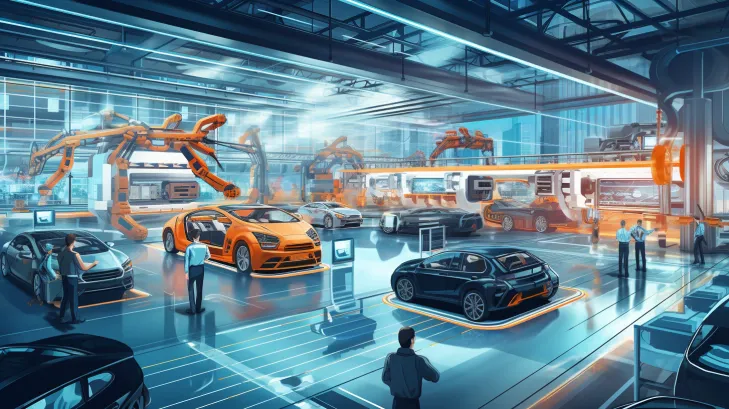Table of Contents
The utilization of AI smart maintenance has made significant progress and has proven to be beneficial when utilized effectively. BMW has recently implemented AI smart maintenance at one of its manufacturing facilities, which is a testament to its potential impact. The smart analysis system being utilized in assembly at BMW Group Plant Regensburg aims to prevent unforeseen stoppages before they happen.
The monitoring system provides proactive and preventive AI smart maintenance through predictive techniques. By analyzing data from conveying equipment, potential faults can be detected early on and prevented, ensuring a smooth flow of vehicle production. With the support of artificial intelligence (AI), this system effectively avoids an average of approximately 500 minutes of disruption per year in vehicle assembly at the Regensburg plant.
AI Smart Maintenance Optimizes BMW Conveyor

Vehicles at BMW Group Plant Regensburg are typically connected to mobile load carriers or skid systems for assembly, which move through the production halls in a continuous chain. If there is any malfunction in the advanced conveyor systems, it can halt the assembly lines, leading to increased AI smart maintenance efforts and higher expenses.
To prevent such disruptions, the innovation team at BMW Group Plant Regensburg has devised a system that can detect potential technical faults in advance, ensuring uninterrupted production. The affected conveyor elements can be taken out from the assembly line and repaired separately, away from the production area.
Vehicles at BMW Group Plant Regensburg are typically affixed to mobile load carriers or skid systems for assembly. These carriers or systems move through the production halls in a continuous chain. If there is any malfunction in the advanced conveyor systems, it can halt the assembly lines, leading to increased AI smart maintenance efforts and subsequently higher costs.
For instance, the load carriers utilized for transporting vehicles during assembly transmit diverse data to the carrier control system. Subsequently, this data is conveyed through the carrier and plant control system to the BMW Group’s exclusive predictive AI smart maintenance cloud platform.
Algorithmic Surveillance for System Anomalies
At this point, the analysis commences: The algorithm consistently scans for irregularities, such as fluctuations in power consumption, abnormalities in conveyor movements, or barcodes that lack sufficient legibility, which could potentially trigger a malfunction.
In the event that anomalies are detected, the maintenance control center promptly receives a warning message, which is then assigned to the on-duty maintenance technician. “Our control center’s surveillance monitors operate 24/7,” elucidates project manager Oliver Mrasek. “This allows us to promptly address any reported faults and remove the affected vehicle from the production cycle.”
The benefit lies in the fact that the monitoring system does not necessitate any supplementary sensors or hardware, rather it assesses the available data from the installed components and conveyor element control. In the event of any irregularities, an alarm will be triggered.
Global Standardization and Continuous Enhancement
Mrasek emphasizes that predictive maintenance is not a standalone solution. To ensure a smooth and efficient implementation across BMW Group plant locations worldwide, the system was standardized in collaboration with the BMW Group’s central shopfloor management and other plant sites.
This approach not only facilitates a swift rollout but also proves to be cost-effective. The system incorporates machine-learning models developed in-house, which utilize heatmaps with different color codes to visually represent various abnormalities detected by the model. This enables a clear visualization of the model’s findings.
Based on practical insights gained from these findings, the algorithms are continuously enhanced and refined. The team is currently in the process of connecting additional installations, optimizing the system, and integrating recommended actions into fault messages.
These fault messages can provide valuable information, such as indicating similar problems that have occurred in the system. This streamlines the troubleshooting process for AI smart maintenance technicians, allowing them to quickly identify and address issues, such as a defective impeller on the conveyor trolley.